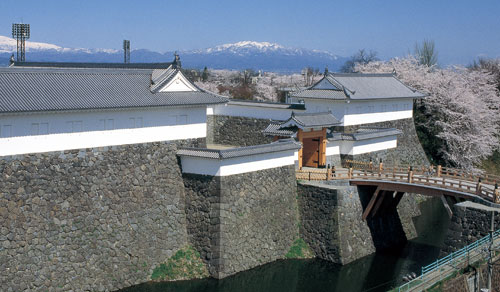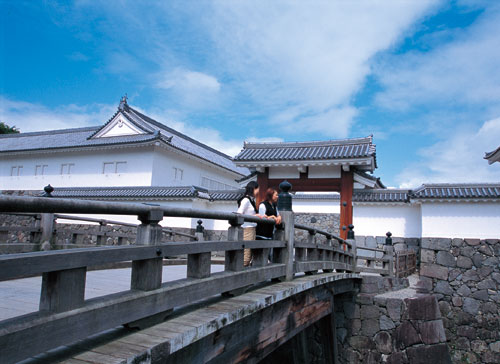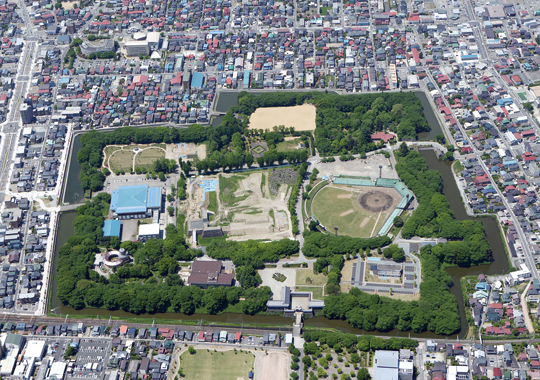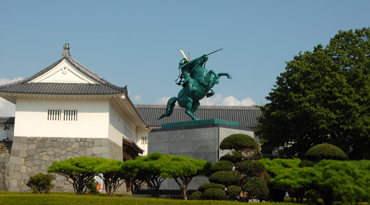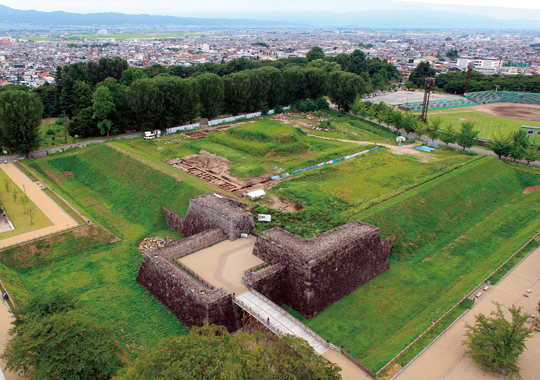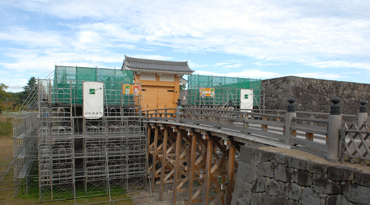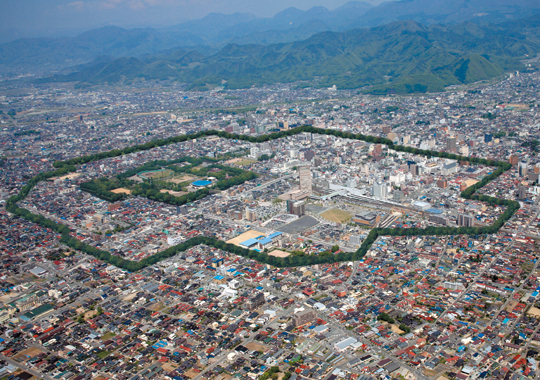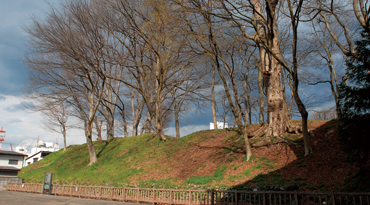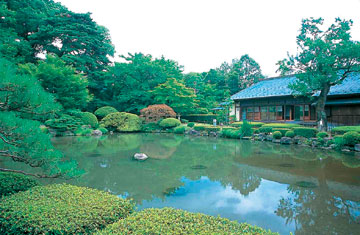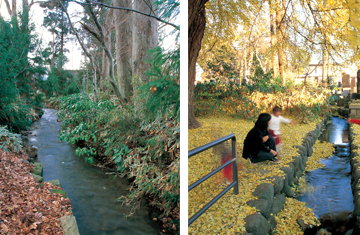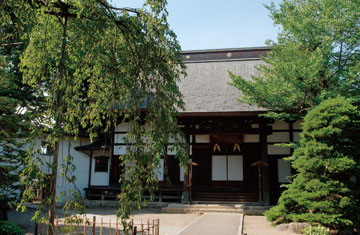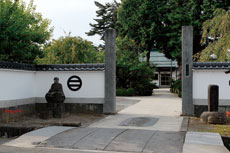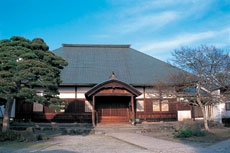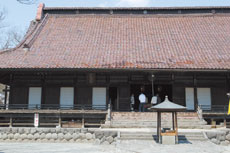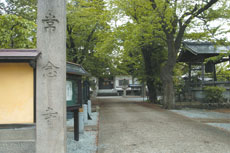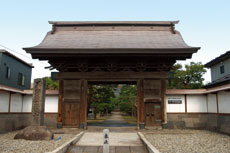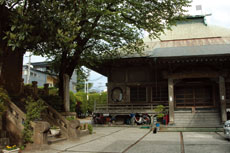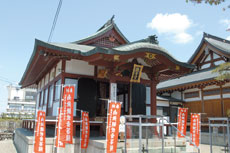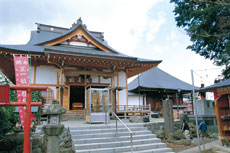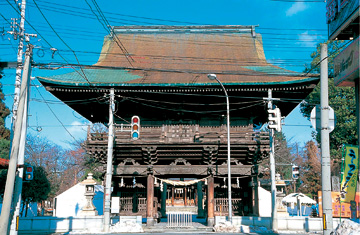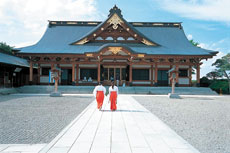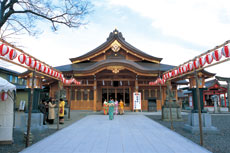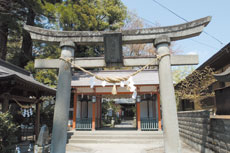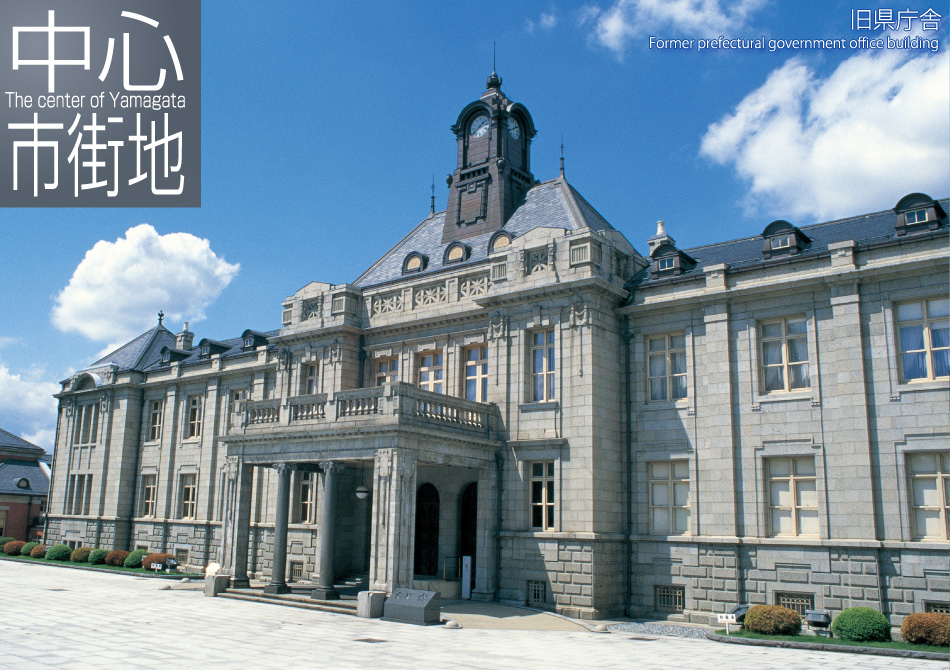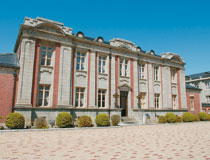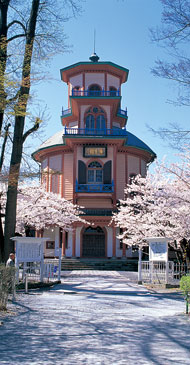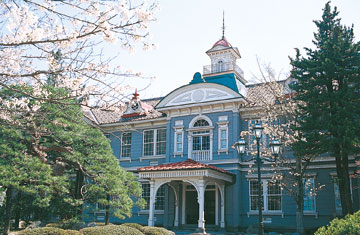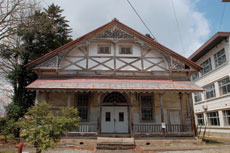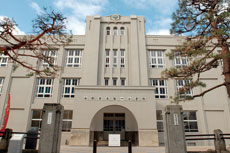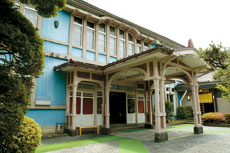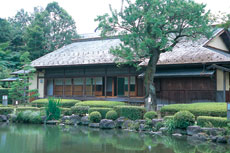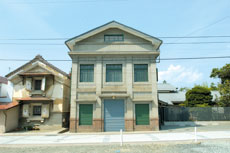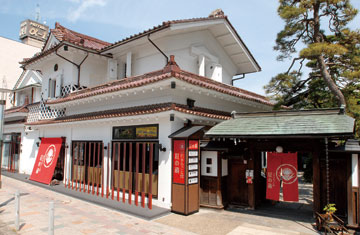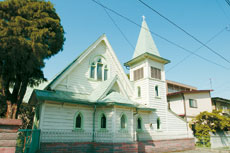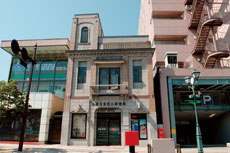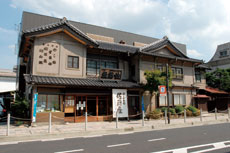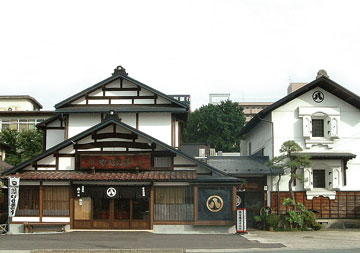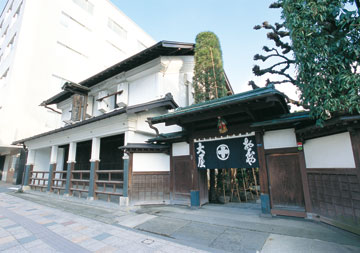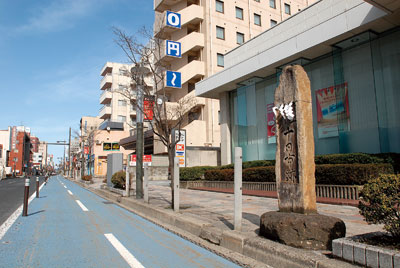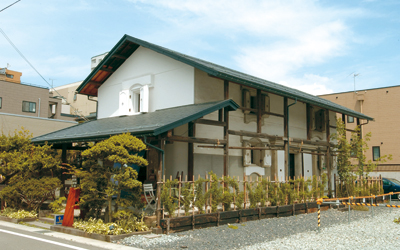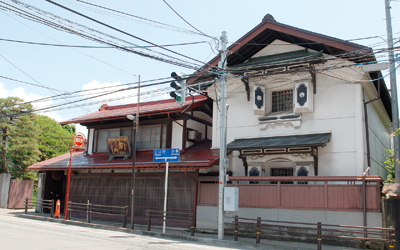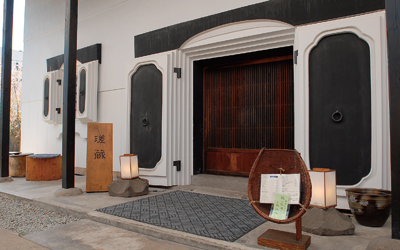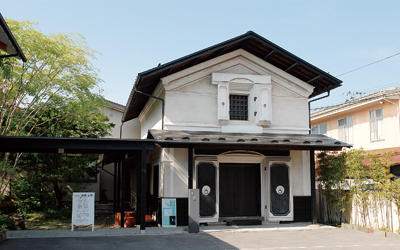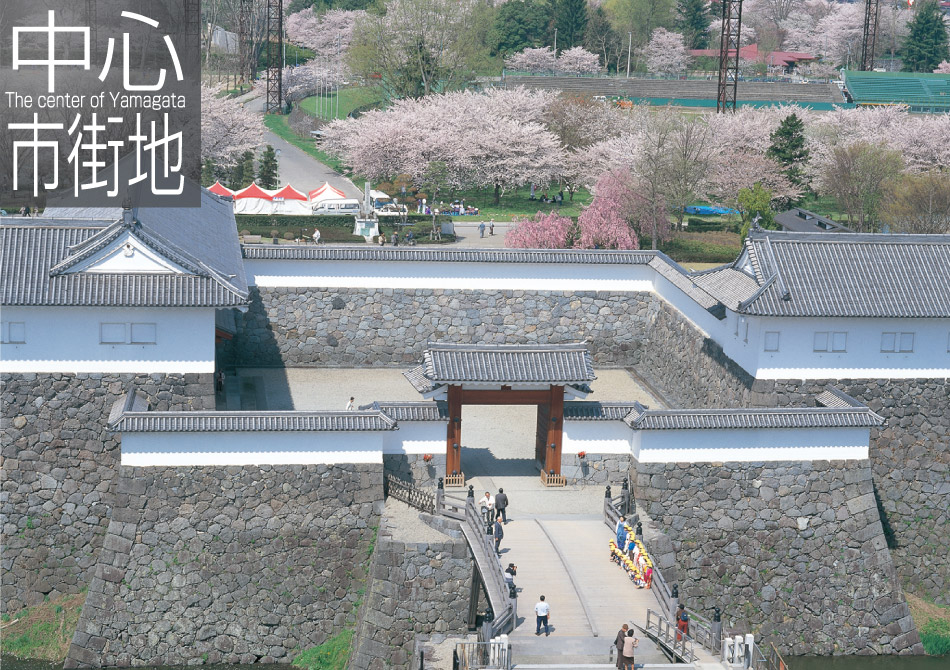




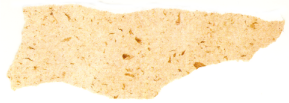
Kajo Park
The city's park, Kajo Park, which encloses the remains of Yamagata Castle's middle ward moat, stone walls and earthworks, was designated as a National Historic Site in Showa 61 (1986). In the park, there is a statue of Yoshiaki Mogami mounted on a horse, a monument, and 64 types of plants and trees including cherry trees, so you can enjoy a stroll through greenery and the ruins. In addition,Kajo Park was also selected as one of "Japan's 100 most beautiful city parks" in the first year of Heisei (1989), and Yamagata Castle was selected as one of" Japan's 100 most beautiful city parks" in Heisei 18 (2006) as well.
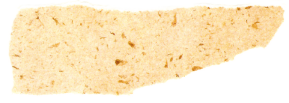
Inner Ward Ichimonjimon
In Meiji 29 (1896), because the company 32 of army infantry was set there, a stone wall and the earthwork of inner ward were destroyed, the ward was buried underground. Presently, the repair work is on its way. Ichimojimon Ishigaki and Ootebashi, etc. have already been restored, which are partly open to the public.
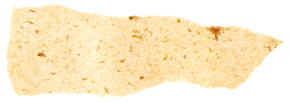
Remains of the outer ward earthworks
The huge outer ward with 11 castle gates was gradually demolished during modernization of the town in the Meiji Period. Now, only part of the structure remains, the largest of the remains are the earthworks near the Toka-machi gate of the ward that are reminiscent of the old days.
| Year | Feudal lord | Fief previously controlled by the lord | The next fief controlled by the lord |
|---|---|---|---|
| 1356 | Kaneyori Shiba | From Osaki, Miyagi Prefecture | - |
| - | Naoie, Mitsunao, Mitsuie, Yoshiharu, Yoshiaki, Mitsuuji, Yoshiatsu, Yoshisada and Yoshimori Mogami | - | - |
| 1571 | Yoshiaki Mogami | - | - |
| - | Iechika and Yoshitoshi Mogami | - | Omori, Shiga Prefecture |
| 1622 | Tadamasa and Tadatsune Torii | Taira, Fukushima Prefecture | Takato, Nagano Prefecture |
| 1636 | Masayuki Hoshina | Takato, Nagano Prefecture | Aizu, Fukushima Prefecture |
| 1643 | Directly managed by the Tokugawa shogunate | - | - |
| 1644 | Naomoto Matsudaira | Ono, Fukui Prefecture | Himeji, Hyogo Prefecture |
| 1648 | Tadahiro Matsudaira | Himeji, Hyogo Prefecture | Utsunomiya, Tochigi Prefecture |
| 1668 | Masayoshi and Masaakira Okudaira | Utsunomiya, Tochigi Prefecture | Utsunomiya, Tochigi Prefecture |
| 1685 | Masanaka Hotta | Koga, Ibaraki Prefecture | Fukushima Prefecture |
| 1686 | Naonori Matsudaira | Hita, Oita Prefecture | Shirakawa, Fukushima Prefecture |
| 1692 | Tadahiro and Tadamasa Matsudaira | Shirakawa, Fukushima Prefecture | Fukuyama, Okayama Prefecture |
| 1700 | Masatora, Masaharu and Masasuke Hotta | Fukushima Prefecture | Sakura, Chiba Prefecture |
| 1746 | Norisuke Matsudaira | Sakura, Chiba Prefecture | Nishio, Aichi Prefecture |
| 1764 | Directly managed by the Tokugawa shogunate | - | - |
| 1767 | Suketomo, Tsunetomo, Hisatomo and Yukitomo Akimoto | Kawagoe, Saitama Prefecture | Tatebayashi, Gunma Prefecture |
| 1845 | Tadakiyo and Tadahiro Mizuno | Hamamatsu, Shizuoka Prefecture | - |
| 1869 | Land transferred to the emperor | - | - |
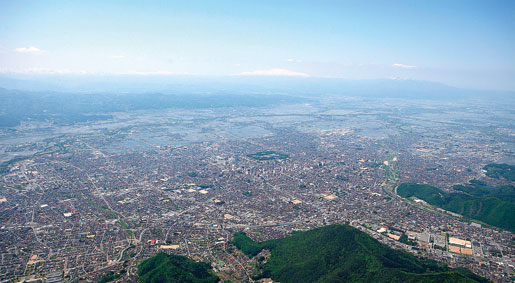

Momiji Park
Hodoji, built by Yukumoto in Tenpyo 3 (731), is a Shinon abbey location blessed under the lords of the Yamagata castle. In Meiji times, it fell to be a waste temple by Shinbutsubunri edict. Presently in front of the tourists is the ancient garden a park of Chisen-kaiyushiki-teien style, which is reconstructed by Tadahiro Matsudaira,.the lord of the Yamagata castle. Inside the park, the retention is an academy designated as state material culture heritage.Seifuso whose main hall has already been moved to Kokubunji Yakushido, and Kannondo to Hokoin to be preserved.

Yamagata Goseki
Taking Mamigasakigawa River as an intake source, the general designation of the five dams, Sasazeki, Gotenzeki, Hakkagouzeki, Miyamachizeki, Soutsukizeki Mamigasakigawa River started from 400 years ago, which flows through cities like a mesh. Such is a rarely seen dam all over the country and it is used to be agricultural water as well as historical site or relics and space or area for water- lovers fond of by people.
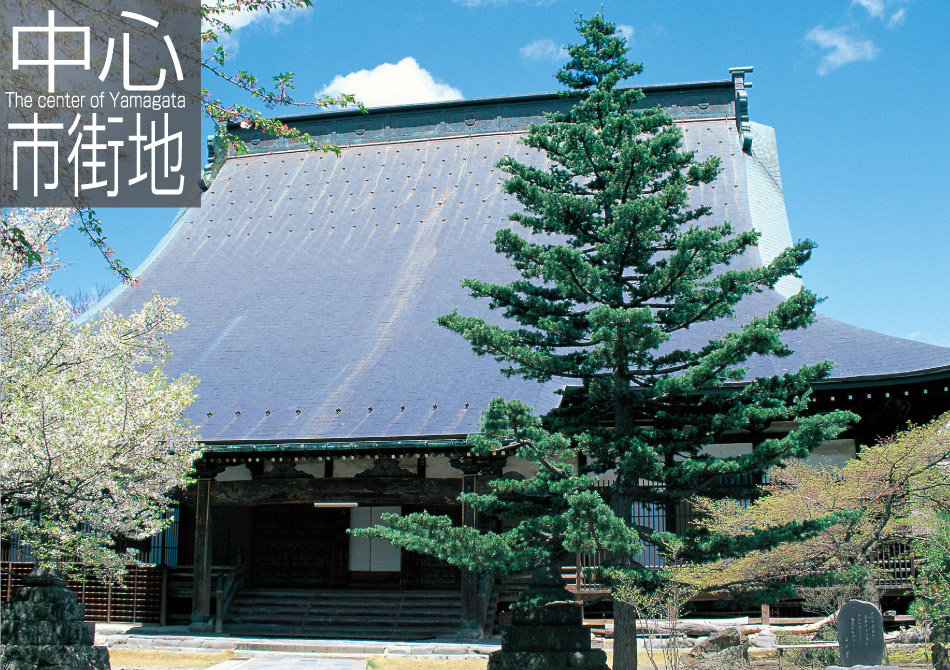
Senshoji Temple
This is the biggest Jodo Shinshu temple in the city of Yamagata. It was relocated and reconstructed in 1595 by Yoshiaki Mogami for the repose of the soul of his daughter, Komahime, who was executed in Sanjogawara in Kyoto together with Hidetsugu Toyotomi. The current main building was reconstructed in 1703, and is a tangible cultural asset designated by the city of Yamagata. A belfry and a bell in the precincts are tangible cultural assets designated by Yamagata Prefecture. A huge ginkgo tree is a precious natural treasure designated by the city.


Kozenji Temple
Kozenji temple was built in 1602 for three generations of the Mogami family, including Yoshiaki Mogami. The temple has an enshu-style garden that effectively incorporates the view of Mt. Chitoseyama, which was constructed at the beginning of the Edo Period. This garden is designated as a precious scenic beauty by the city of Yamagata.

Komyoji Temple

Hokoin Temple

Kokubunji Temple Yakushido

Jonenji Temple

Ryumonji Temple

Chogenji Temple

Jokoji
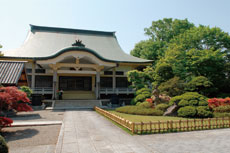
In order to repay the kindness of his father’s recovery from an illness, Yoshiaki Mogami contributed a big Buddhist temple. Placed here is the spirit tablet of Jokoin, mother of Hoshina Masayuki, the lord of the Yamagata Castle,and Tokugawa Iemitsu’s half-brother --- the third generation shogun of Tokugawa Shogunate, because of which the temple was protected.

Ennoji Temple

Mutsukunugi Kannondo Temple

Chokai Gassan Ryoshonomiya Shrine
The town of Miyamachi is named after this shrine, which is the biggest in Yamagata. It is thought that Minamoto no Yoriyoshi and Yoshiie founded this shrine in 1063. Known as Omiya-sama, people have worshipped at this shrine which is dedicated to the guardian god of the north from ages past. The inner shrine, Zuishimmon gate and Jorin Jinja Shrine on the same grounds are tangible cultural assets designated by the city of Yamagata.

Horetsu Jinja Shrine
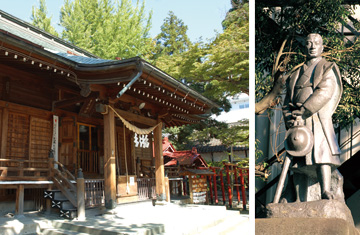
The Mizuno family, the final feudal lord of Yamagata, dedicated this shrine to Tadamoto, a famous restorer, a child of Ieyasu Tokugawa. Prayers are also offered in memory of 24 people, including Saburoemon Motonobu Mizuno. He was a councilor who prevented Yamagata from being destroyed by war and who died in the Boshin War.

Mutsukunugi Hachimangu Shrine
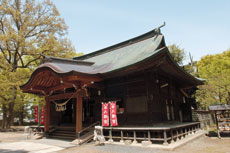
Opinion varies as to whether this shrine was founded by Ono no Azumahito in the Nara Period or by Minamoto no Yoriyoshi in the Heian Period. People cherished this shrine because its god was believed to be the guardian of Yamagata Castle. Many people gathered from neighboring districts for the shrine festival. A huge zelkova tree, hundreds of years old, stands in the grounds.

Utakake Inari Jinja Shrine
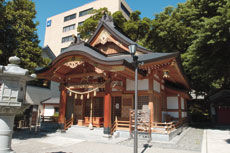
It is believed that the first feudal lord, Kaneyori Shiba, founded this shrine within the castle for a god to protect Yamagata Castle. The name is derived from the custom whereby the feudal lord and the citizens of the castle town offered the god their poems written on special paper. West of the shrine are earthworks remaining from the outer ward of Yamagata Castle.

Yudonosan Jinja Shrine
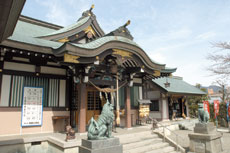
Michitsune Mishima, the first governor of Yamagata Prefecture, founded this shrine in 1676, and dedicated it to a god to protect the prefectural government. On the same grounds, there is Ichigami Jinja Shrine dedicated to the god protecting Hatsuichi, the traditional market in Yamagata. This god is also called Ebisujin and worshipped as a god for prosperous business.

Yamagata Prefecture Gokoku Jinja Shrine

Suwa Jinja Shrine

Tenman Jinja Shrine
Bunshokan(Former prefectural government office building)
Constructed in 1916, this building was probably designed by Shinnosuke Tahara with advice from Seiichiro Chujo (born in Yonezawa), one of the most famous architects of the Meiji Period. Designated as an important national cultural property,this Renaissance-style brick building is clad in granite from Yamagata Prefecture. Bunshokan is now the prefecture museum and exhibits records of the prefectural government and prefectural assembly, where you can learn about the history of the prefecture. The Bunshokan evokes a different mood when illuminated at night.

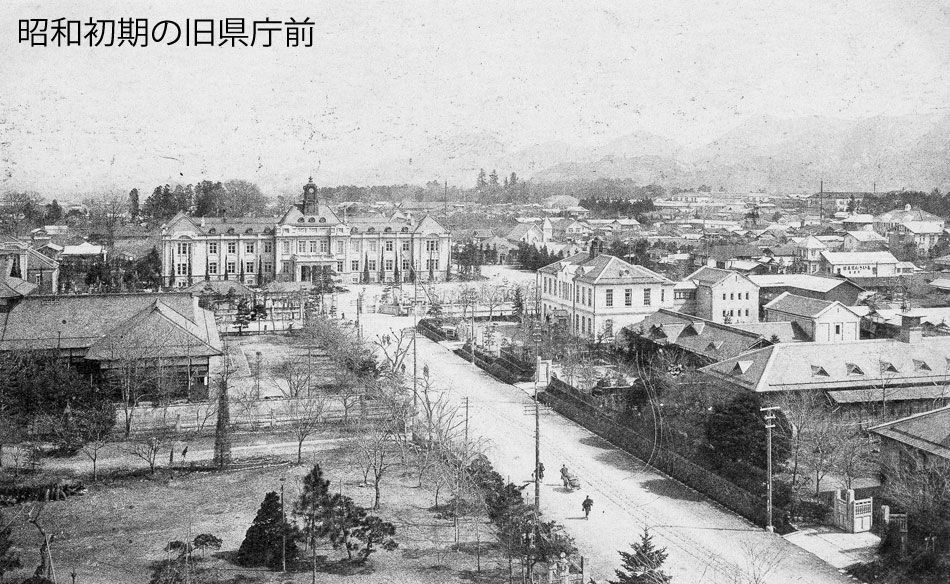
After the Meiji Restoration, Michitsune Mishima, the first governor of Yamagata Prefecture, rapidly modernized the prefecture's capital, Yamagata, with a program of construction that included the latest western-style buildings (where Bunshokan is now located), and road building. Even after that, various styles of buildings were constructed, and now, among the mixture of many historic buildings constructed at different times, some are designated as important national cultural properties. This is because Yamagata suffered little from the Boshin War at the beginning of the Meiji Period, World War II in the Showa Period, or from natural disasters, but some buildings burnt down during the great fires in 1894 and 1911.

Main building of the former Saiseikan

Former Yamagata Teachers College, main building
Renaissance-style two-story wooden building with a tiled roof with a beautifully symmetrical design was constructed in 1901; designated as an important national cultural property together with the main gate and the guardhouse. Now an education museum showing the course of education-centered Yamagata Prefecture from the Meiji Period to the present time.

Former Yamagata Teachers College,
lecture hall

Former Yamagata First Elementary School
(Yamagata manabikan)

Main building
of Chitosekan

Seifuso

Myozenji Temple
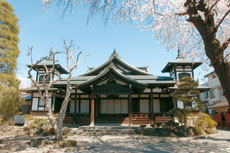
Built in 1934, this beautiful building was designed by Chuta Ito (born in Yonezawa), a professor at Tokyo University and expert in the history of architecture. Perfectly symmetrical, with a drum tower at one end and a bell tower at the other, it looks like a European church. Registered as a national tangible cultural asset.

Former Ichijima firearms and gunpowder shop

Nanoka-Machi Gotenzeki
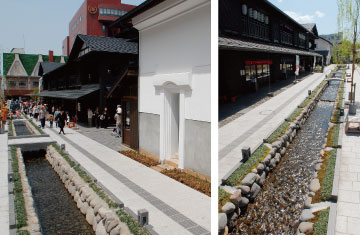
Being one of Yamagata Goseki, Gotenzeki, which flows through the center of castle town, was renovated in Heisei 22 (2010) to reappear the beautiful masonry which is a favorite space for people to get close to water. A fresh look is taking on the traditional townhouses along dam and the collection stores built in Meiji 19 (1886).

Yamagata Marugotokan Beni-no-kura
Yamagata Marugotokan Benikura used to be Marutani Hasegawa’s Storehouse of a safflower merchant. The five warehouses paralleling with dwelling houses, which was built in Meiji 34 (1901), is now used as a place for Japanese restaurant, native produce sale and sightseeing information.

St. Petros church
in Yamagata

Yamagata Muika-machi Church
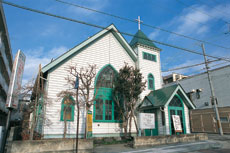
Built up in Taisho 3 (1914), Yamagata Muika-machi church is a building with a gabled roof, a one‐storied house, whose southeast part is a . rooftop structure, with a small sized gabled roof main gate in the front, constructing of very simplicity, and with a structure of pointed arch producing an excellent design.

Yamagata Catholic Church
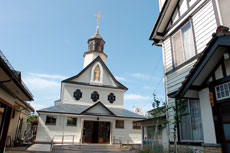
Old Nishimura Photo Studio is a west-style architecture built in Taisho 10 (1921), when photograph is a career in fashion and this small sized architecture reveals the occupational stigma. The floor above the main gate of the architecture extrudes about a foot, with the western style of gabled decorated roof and duolex arch small window, which looks impressive and attractive.

Old Nishimura Photo Studio
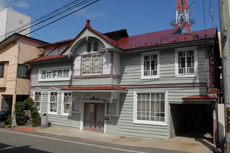
Old Nishimura Photo Studio is a west-style architecture built in Taisho 10 (1921), when photograph is a career in fashion and this small sized architecture reveals the occupational stigma. The floor above the main gate of the architecture extrudes about a foot, with the western style of gabled decorated roof and duolex arch small window, which looks impressive and attractive.

Yamagata Nanoka-machi Ni Post Office

Satoya Head Office

Komian Maruhachi
Established in 1885, this company originally produced fermented bean paste and shoyu sauce, but is now a retailer specialized in pickles. The shop is a remodeled warehouse from the Taisho Period.

Maruju Oya
This company started as a trader in safflowers in 1844, but turned to brewing in the middle of the Meiji Period. It operates from a cherished warehouse that escaped the great fire of 1894.

